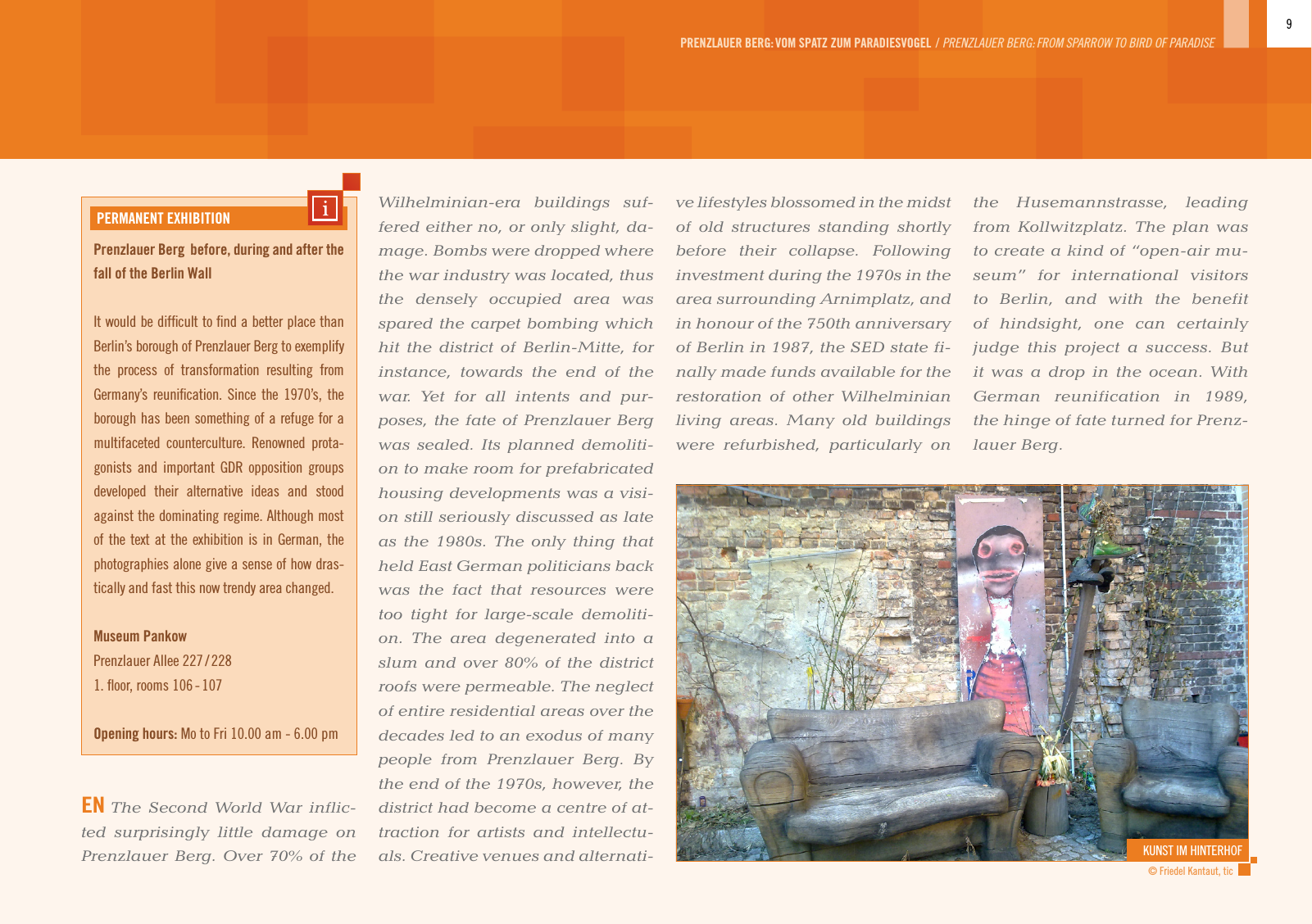9eN The Second World War inflic ted surprisingly little damage on Prenzlauer Berg Over 70 of the Wilhelminian era buildings suf fered either no or only slight da mage Bombs were dropped where the war industry was located thus the densely occupied area was spared the carpet bombing which hit the district of Berlin Mitte for instance towards the end of the war Yet for all intents and pur poses the fate of Prenzlauer Berg was sealed Its planned demoliti on to make room for prefabricated housing developments was a visi on still seriously discussed as late as the 1980s The only thing that held East German politicians back was the fact that resources were too tight for large scale demoliti on The area degenerated into a slum and over 80 of the district roofs were permeable The neglect of entire residential areas over the decades led to an exodus of many people from Prenzlauer Berg By the end of the 1970s however the district had become a centre of at traction for artists and intellectu als Creative venues and alternati ve lifestyles blossomed in the midst of old structures standing shortly before their collapse Following investment during the 1970s in the area surrounding Arnimplatz and in honour of the 750th anniversary of Berlin in 1987 the SED state fi nally made funds available for the restoration of other Wilhelminian living areas Many old buildings were refurbished particularly on the Husemannstrasse leading from Kollwitzplatz The plan was to create a kind of open air mu seum for international visitors to Berlin and with the benefit of hindsight one can certainly judge this project a success But it was a drop in the ocean With German reunification in 1989 the hinge of fate turned for Prenz lauer Berg PreNzlauer berg VOm sPatz zum ParadiesVOgel PRENzlAuER BERG FROM SPARROW TO BIRD OF PARADISE PermaNeNt eXhibitiON Prenzlauer berg before during and after the fall of the berlin Wall It would be difficult to find a better place than Berlin s borough of Prenzlauer Berg to exemplify the process of transformation resulting from Germany s reunification Since the 1970 s the borough has been something of a refuge for a multifaceted counterculture Renowned prota gonists and important GDR opposition groups developed their alternative ideas and stood against the dominating regime Although most of the text at the exhibition is in German the photographies alone give a sense of how dras tically and fast this now trendy area changed museum Pankow Prenzlauer Allee 227 228 1 floor rooms 106 107 Opening hours Mo to Fri 10 00 am 6 00 pm KuNST IM HINTERHOF Friedel Kantaut tic

Hinweis: Dies ist eine maschinenlesbare No-Flash Ansicht.
Klicken Sie hier um zur Online-Version zu gelangen.
Klicken Sie hier um zur Online-Version zu gelangen.